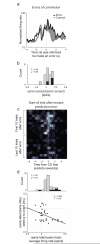Neural structures underlying set-shifting: roles of medial prefrontal cortex and anterior cingulate cortex
- PMID: 23664821
- PMCID: PMC3708542
- DOI: 10.1016/j.bbr.2013.04.037
Neural structures underlying set-shifting: roles of medial prefrontal cortex and anterior cingulate cortex
Abstract
Impaired attentional set-shifting and inflexible decision-making are problems frequently observed during normal aging and in several psychiatric disorders. To understand the neuropathophysiology of underlying inflexible behavior, animal models of attentional set-shifting have been developed to mimic tasks such as the Wisconsin Card Sorting Task (WCST), which tap into a number of cognitive functions including stimulus-response encoding, working memory, attention, error detection, and conflict resolution. Here, we review many of these tasks in several different species and speculate on how prefrontal cortex and anterior cingulate cortex might contribute to normal performance during set-shifting.
Copyright © 2013 Elsevier B.V. All rights reserved.
Figures




References
-
- Benes FM, McSparren J, Bird ED, SanGiovanni JP, Vincent SL. Deficits in small interneurons in prefrontal and cingulate cortices of schizophrenic and schizoaffective patients. Archives of general psychiatry. 1991;48:996–1001. - PubMed
-
- Baddeley AD, Baddeley HA, Bucks RS, Wilcock GK. Attentional control in Alzheimer’s disease. Brain : a journal of neurology. 2001;124:1492–508. - PubMed
-
- McDonald CR, Delis DC, Norman MA, Wetter SR, Tecoma ES, Iragui VJ. Response inhibition and set shifting in patients with frontal lobe epilepsy or temporal lobe epilepsy. Epilepsy & behavior : E&B. 2005;7:438–46. - PubMed
-
- Halleland HB, Haavik J, Lundervold AJ. Set-shifting in adults with ADHD. Journal of the International Neuropsychological Society : JINS. 2012;18:728–37. - PubMed
Publication types
MeSH terms
Grants and funding
LinkOut - more resources
Full Text Sources
Other Literature Sources
Miscellaneous

